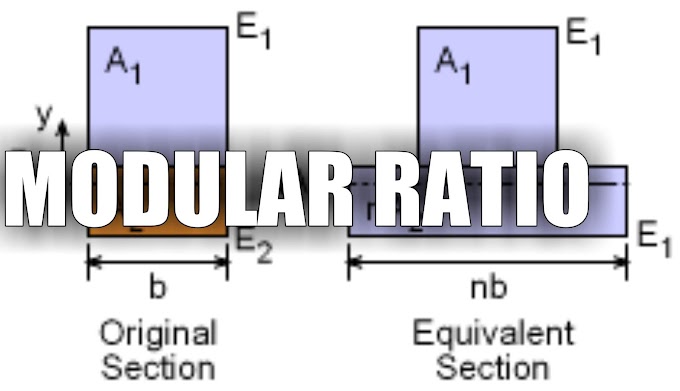Prestressing is the process of introducing compressive stress to the concrete to counteract the tensile stresses resulting from an applied load. The gradual reduction of this introduced compressive stress in a prestressed member due to various reasons is called losses of prestress.
Depending upon the time at which different losses occur, these can be divided into two types.
Depending upon the time at which different losses occur, these can be divided into two types.
Immediate Losses (Short term)
- Friction
- Anchorage slip
- Elastic shortening of concrete
Time-dependent losses(Long term)
- Shrinkage of concrete
- Creep of concrete
- Relaxation of steel
There are two methods of introducing prestressing to a concrete member, namely pre-tensioning and post-tensioning. Pre-tensioning happens before the casting of the concrete and post-tensioning happens after the hardening of the concrete member. Depending on the process of prestressing different types of losses occur.
Losses occur in case of Pre-tensioning
FrictionAnchorage slip- Elastic shortening of concrete
- Shrinkage of concrete
- Creep of concrete
- Relaxation of steel
Losses occur in case of Post-tensioning
- Friction
- Anchorage slip
- Elastic shortening of concrete
- Shrinkage of concrete
- Creep of concrete
- Relaxation of steel
Note that all the Time-dependent losses (Long term losses) occur in the case of both pre and post-tensioning.
Friction
In the case of pre-tensioning, there is no loss due to friction as the concrete is not being hardened at the time of tensioning the tendons.
In the case of post-tensioning, the tendons are provided inside the duct of a precast concrete member. So the loss in prestress occurs due to friction between the concrete surface and the tendon in the process of tensioning. The loss of friction is also accompanied by the wobble effect.
Elastic shortening of concrete
In the case of pre-tensioning as we cut the tendons the concrete shortens within a short interval of time by a certain amount which causes loosening of steel tendons. Hence causing a loss in prestress.
In the case of post-tensioning as the concrete is already hardened, after cutting the tendons the concrete doesn't shorten further. But if the tendons are provided one by one instead of providing simultaneously, the provision of the second tendon causes loosening of the1st tendon, the provision of 3rd tendon causes loosening of 1st and 2nd tendon and so on. So, if the tendons are provided simultaneously the loss due to elastic shortening is zero in the case of post-tensioning. But if the tendons are provided sequentially, the provision of a tendon causes loss of prestress in earlier provided tendons.
Anchorage slip
Anchorage, as the name signifies, is a component that is used to anchor the tendons into the concrete while terminating the tendons. The main function of anchorage is to transfer the stressing force to the concrete once the stressing process is completed.
In the case of pre-tensioning, the tendons are monolithically embedded into the concrete. So, no external anchorage is provided and hence there is no loss due to anchorage slip.
In case of the post-tensioning system as the tendons are provided inside the ducts of a precast concrete member. So anchorage is provided at either end of the tendon to transfer the stressing force to the concrete. If the anchorage displaces from its original position (generally the wedge slips immediately before attaining the proper final position) it allows loosening of the tendons thereby causing loss of prestress.
Creep of concrete
Deformation due to rearrangement of molecules over a period of time under the application of a constant load is called creep. The deformation of concrete along the direction of tendons, makes them loosened thereby causing loss in prestress.
Shrinkage of concrete
The volumetric changes of concrete structures due to the loss of moisture by evaporation is known as concrete shrinkage or shrinkage of concrete. Due to shrinkage of concrete, the tendons are loosened and loss in prestress occurs.
Relaxation of steel
Relaxation of steel is defined as the decrease in stress with time under constant strain. Due to the relaxation of steel, the prestress in the tendon is reduced with time. Just like creep, relaxation also depends on time. It depends on the type of steel, initial amount of prestress, and the temperature.





0 Comments